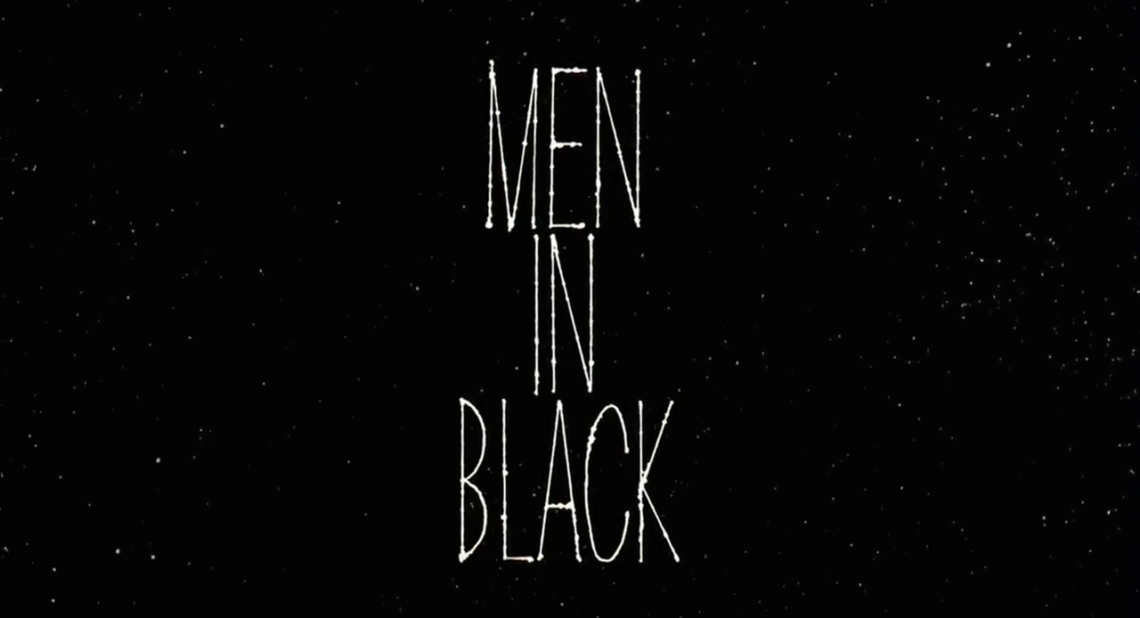-
#534 – Men in Black II (2002)
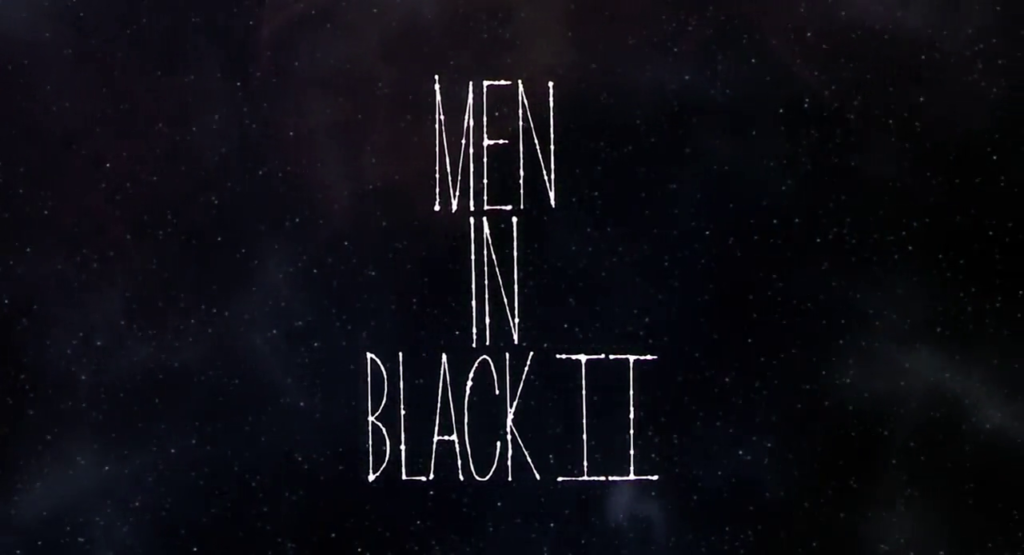







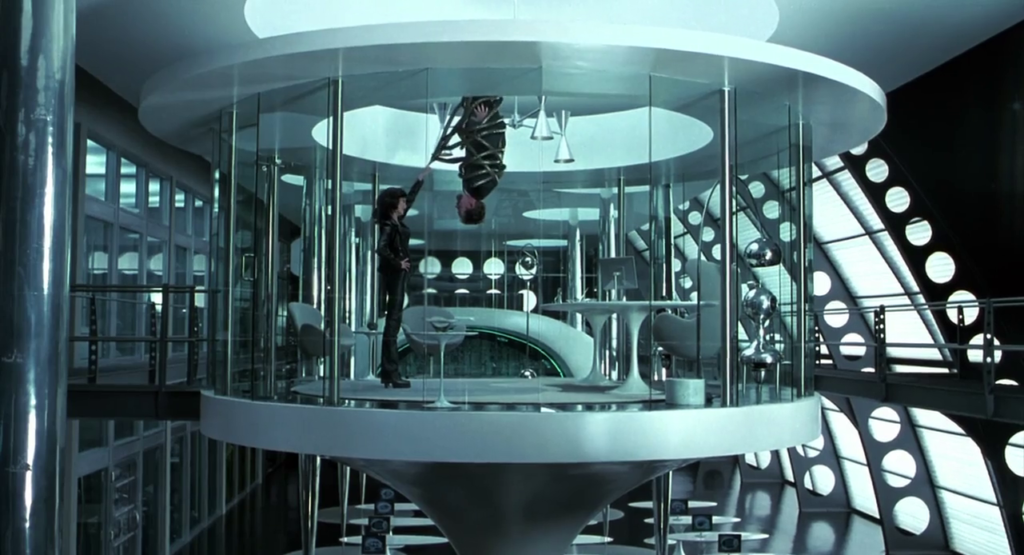
Men in Black II (2002)
Film review #534
Director: Barry Sonnenfeld
SYNOPSIS: Agent J is having trouble keeping an agency partner, as he feels like none of them are cut out for the job. When Serleena, an evil alien, comes to Earth looking for an artefact of immense power called the Light of Zartha, she will stop at nothing to acquire it. Unfortunately, the only person who knows where the light is hidden is Agent K, whose memories Agent J wiped five years ago when he neuralised him. Agent J goes to retrieve Agent K, somehow restore his memories, and hopefully save the world from an alien threat once again…
THOUGHTS/ANALYSIS: Men in Black II is a 2002 sci-fi film and the sequel to the 1997 film Men in Black. The film starts of with Agent J, who five years on from the events of the first film, has gone from a rookie to one of the top agents in the agency. He chases down Jeff, a monster worm who travels through the New York subway. J’s new partner T, seems to be not up to the job, and so J neuralises him and wipes his memory to lead a normal life. Agency leader Z laments J’s constant neuralising of his partners, including L, who became an agent at the end of the first film. Meanwhile, an alien named Serleena lands on Earth looking for the “Light of Zartha,” an energy source of immense power that was supposedly taken off Earth years ago, and she has been destroying planets across the universe looking for it. The only person that knows where it is is Agent K, who was neuralised himself, and so agent J must retrieve him and recover his memories before Serleena destroys everything.
The film’s structure and plot is very similar to the first time…a bit too similar. The film basically just role reverses the two main characters from the first film; with Agent J now being the veteran agent, and now Agent K without his memories is technically the rookie. You can see how this might be an interesting way to mix things up for the sequel and have the characters take on new roles, but it really is just a straight swap between them. Also, Will Smith doesn’t really work as the “straight” guy. Another problem with this is that when Agent K does get his memory back, the roles reverse again, and Agent J suddenly becomes the wisecracking rookie again, undoing all of his character development. This feels very much like a backwards step, although in some senses it is for the best, as the two can get into the roles that work properly for them. Going through all the trouble of getting K’s memories just to have them revert to the status quo is a pretty weak payoff though. The second element of the story concerning the “Light of Zartha” is again just a retread of the first film, in that the agents must find a small artifact that is actually a massive power source. There’s really nothing new that the film offers here.
Will Smith and Tommy Lee Jones are still appealing and entertaining in their roles, and still have great chemistry. The whole role reversal element doesn’t really do anything for their characters though. Frank the Pug takes the role of “rookie” before K returns, but it just doesn’t have the same dynamic, and relies very much on the repeated joke of Frank being a dog and that’s it. The supporting cast of Z and the worms make a return and are fine in their roles, and there’s a strange cameo by Michael Jackson who wants to be “Agent M,” which I’m not really sure what to think of. A lot of the pop culture gags, such as this and Frank’s barking to “Who Let the Dogs Out” definitely ages the film more than anything else. Serleena as a villain is quite boring and underwhelming, both from being very similar to the first film’s villain, and Lara Flynn Boyle’s dry and uninterested delivery just doesn’t work. Johnny Knoxville’s character, serving as Serleena’s henchman, is pretty underwhelming and annoying too: he also just…vanishes near the end of the film, making him seem extremely pointless. The tone of the film is a bit all over the place: the added pop-culture references, as mentioned, definitely age the film, and while some elements of the film feel a bit more geared towards younger audiences, there’s also a few darker elements that are definitely intended for older viewers, so it’s hard to pin down the overall feel of the film. The pop culture references were apparently added in by Barry Fanaro, who revised the first draft of the script, and this is something the original writer, Robert Gordon, avoided doing, which I think he was right about. Fanro did apparently reintroduce Agent K earlier in the film with his revisions, so that’s definitely a plus for him. The director, Barry Sonnenfeld, also took issue with the love story element between Agent J and Laura, because Will Smith doesn’t work as the serious guy (at that time anyway). This very much seems like a film in which no real vision got it’s way, and the conflicts at all these levels compromises in a very safe repeat of the first film.
Overall, Men in Black II definitely has some entertaining elements, and is held together by the main cast and their chemistry. A confusing mix of tone and visions from multiple people involved really hamper the film’s ability to drive the franchise forward, and supported by a weak cast of minor characters and cheap gags, you’ll be left feeling that you haven’t gained anything from watching this film. It’s perhaps worth a watch once, but the first film does everything better.
There’s perhaps one thing about the sequel (controversially) that I will say surpasses the first film though: I prefer the theme “Nod ya Head” to the “Men in Black” song from the first one. I’m sure that will make me some enemies.
-
#533 – Men in Black (1997)
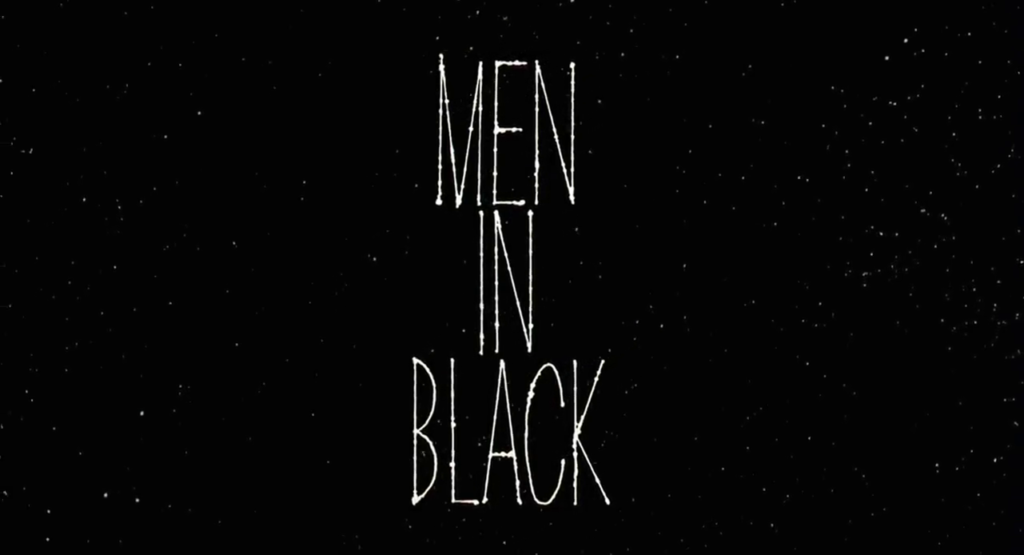




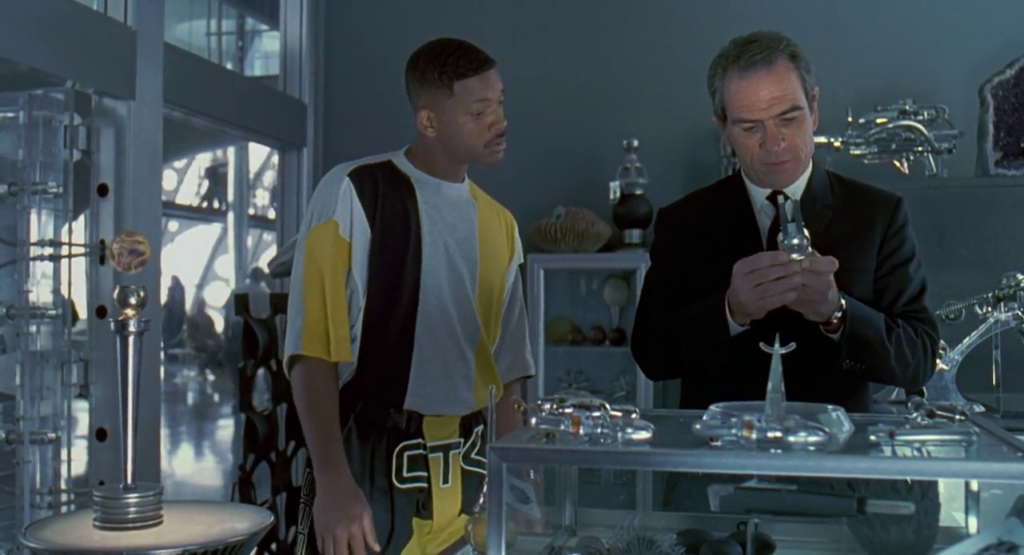




Men in Black (1997)
Film review #533
Director: Barry Sonnenfeld
SYNOPSIS: N.Y.P.D. detective James Edwards chases down a criminal that turns out to be an alien, but no one believes him, until a mysterious man dressed in black turns up, and ultimately wipes his memory. He does however, give him the chance to prove himself, and James becomes Agent J, the newest member of the Men in Black, a secret organisation that monitors and regulates alien activity on Earth. Meanwhile, an intergalactic threat that endangers the Earth emerges, and agents J and K must stop the alien menace and prevent the planet’s destruction.
THOUGHTS/ANALYSIS: Men in Black is a 1997 sci-fi film loosely based on the comic series of the same name. The film centres around a secret organisation (unsurprisingly) called the Men in Black: who monitor and regulate alien activity on Earth, while keeping their existence hidden from the public. NYPD detective James Edwards chases down a suspect which turns out to be an alien in disguise, but no one believes him. That is, until a man dressed in a black suit arrives and confirms his suspicion that aliens are real. The man wipes James’ memory, but gives him the opportunity to join the Men in Black. The best part of the film is definitely between agents J and K, as Will Smith and Tommy Lee Jones fit in to their roles perfectly, and their chemistry is very entertaining. It’s perhaps a bit cliché with J being the streetwise, wisecracking cop, and K being the dry-humoured, grizzled veteran, but they definitely make the roles their own, and together they just work so well. The supporting cast also fit their roles well, and have very specific roles to play. The other plotline other than Agent K training J is one that involves a bug-like alien attempting to find a miniature galaxy that doubles as an energy source, and a diplomatic incident that threatens to end in the earth’s destruction. It’s not as interesting a plot point than J and K’s development, and when the film moves towards the climax, the film does lose focus a bit. Nevertheless, it’s still an entertaining ride, and a comfortable runtime so that it doesn’t overstay it’s welcome.
The film makes considerable effort to create it’s world, and the sets, designs and effects all help build it up into something imaginative and fun. The Men in Black headquarters, and their weapons and gadgets are slick, the alien designs are varied and obviously have had a lot of effort put into them, and although the CG has obviously aged a bit since 1997, it still looks decent and doesn’t disrupt the enjoyment of the film. Add to this the recognisable soundtrack by Danny Elfman, and you have a very competent production all round. Apart from the film losing momentum near the end, Men in Black is a fun, entertaining film that gets the best out of it’s cast and those behind the scenes. It was also successful enough to launch a franchise, including sequels, an animated series, and video games. The film opens up plenty of possibilities to be explored, but never gets too heavy with the lore and exposition, and focuses on being an entertaining film that, while leans a lot on the buddy-cop trope and the rookie partnered with a veteran, it has enough of a twist on it, and amplified by the lead’s chemistry, it feels fresh enough. It still holds up as a good film with enough humour and action to make it worth a watch if you’ve never seen it before.
-
#532 – Lobster Man from Mars (1989)






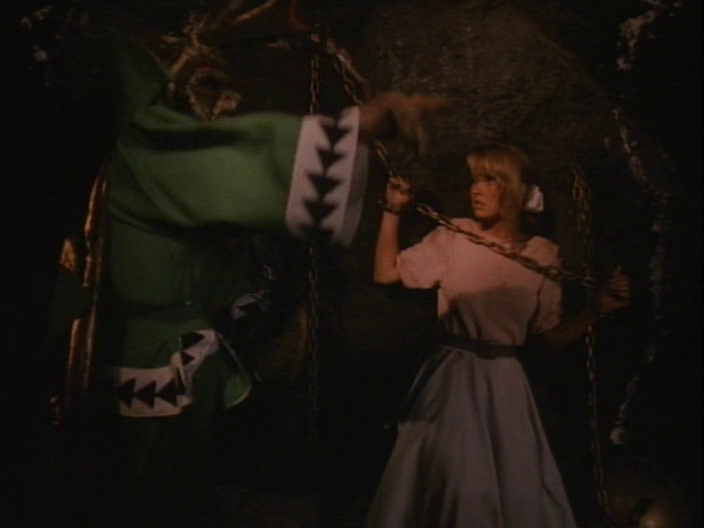



Lobster Man from Mars (1989)
Film review #532
Director: Stanley Sheff
SYNOPSIS: A movie studio executive is plagued by money problems, and requires a tax-write off to keep the IRS away. He decides to produce a film brought in by a young film writer that is utterly absurd: “Lobster Man from Mars…”
THOUGHTS/ANALYSIS: Lobster Man from Mars is a 1989 sci-fi film within a film. Opening up, we see Movie mogul J.P. Sheldrake, who is facing monetary pressure from the usual suspects: his ex-wife, the I.R.S., and so on. He decides he needs to release a movie that flops so badly he can make it a tax write-off and keep those he owes money to at bay. Fortunately, young movie writer/producer Stevie Horowitz walks in with the perfect potential film: Lobster Man from Mars, a film in the style of the old b-movie sci-fi films. The film (as a whole) becomes a film-within-a-film: The movie mogul sits in a theatre to watch the “Lobster Man from Mars” film, and we watch it as well, with a few occasional cutaways to Sheldrake to offer his thoughts. It’s an interesting setup, but was done prior in the 1968 film The Producers to much better effect. We’re also only taken out of the film a few times to see Sheldrake’s thoughts, meaning for the most part the “film in a film” element is irrelevant. With regards to the “Lobster Man from Mars” film itself, it follows a very typical b-movie sci-fi plot which it is aiming to parody: Mars is “leaking air” from it’s atmosphere, and so the ruler of Mars sends the dreaded lobster man and his assistant Mombo, who resembles a gorilla in a space helmet, to go to Earth and steal all it’s air…? Honestly, I’m not sure how they’re going to steal Earth’s air, and how it’s going to help if Mars is “leaking” any air it gets anyway, but regardless, when they arrive on Earth, the killing starts, and anyone who gets in their way gets turned into a pile of bones.
The film mostly plays it straight, with the film-in-a-film just being played without any commentary or over-the-top parody: it could easily pass for an actual b-movie. This is both a core strength and a weakness in the film: the best comedic moments come from the film playing it completely straight without any overt humourous moments, and it is the unexpected moments that provide the best comedy. The drawback to this is that it sometimes plays it too straight, and you forget you’re watching something that is supposed to be funny for fairly long stretches. The humour also feels fairly niche, in the sense that you would have to have actually watched these films originally to really get what it is parodying. Some of the really niche references, such as Colonel Ankrum being a reference to Morris Ankrum, who played similar characters in 1950′s films, is only going to be understood by a fraction of viewers. It definitely gets the b-movie feel right, but in 1989, there was plenty of other parodies of the genre that offered something new and entertaining from an entertainment perspective. This film just feels like it goes through the motions while reminding you it is a parody from time to time. There were a few of these b-movie parodies in the 80′s, but they typically went for a more upfront comedy and absurd premise, such as Killer Klowns from Outer Space. While a plot about Mars leaking air sounds quite silly, it definitely fits the b-movie mold, and would probably have fit right in. Although released in 1989, the film was actually written about ten years earlier, and it definitely feels that way. Lobster Man from Mars does something a little different, but it altogether feels a bit too niche and relies too much on in-jokes to appeal to a more general audience.
-
#531 – The Gingerweed Man (2021)

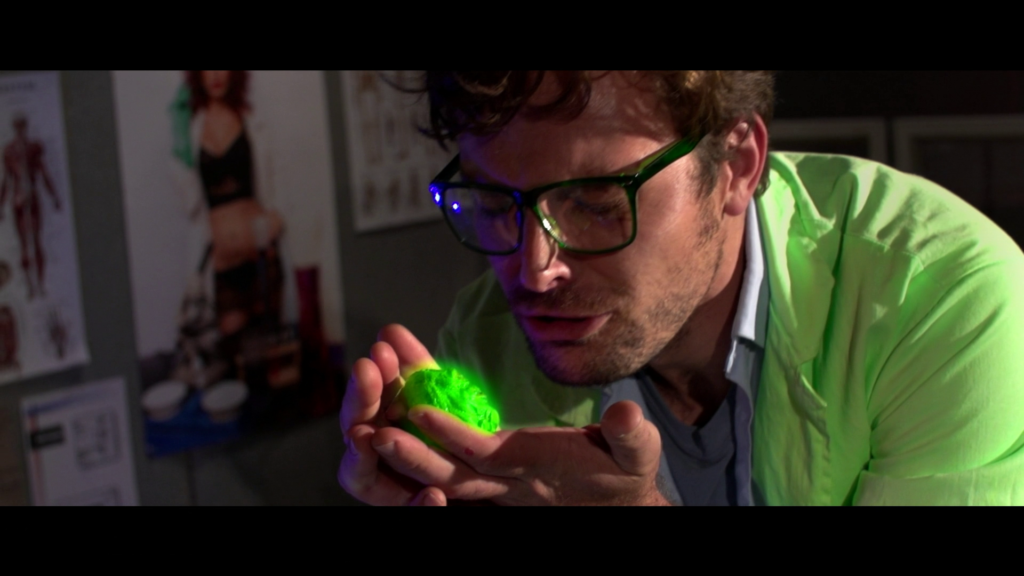








The Gingerweed Man (2021)
Film review #531
Director: Brooks Davis
SYNOPSIS: The Gingerweed man has started a weed delivery service in the city, catering to all sorts of clientele. When he stumbles upon a living, super strain of weed, he finds himself having to prevent it from falling into the wrong hands and being used for evil…
THOUGHTS/ANALYSIS: The Gingerweed Man is a 2021 film and a spin-off of the Evil Bong film franchise. From the opening, we see that the Gingerweed Man has set up a weed delivery service with his partner Barbara, and delivers weed to all the wacky people around town. Meanwhile, a scientist has managed to create a living, super strain of weed powerful enough to save or destroy the world. The evil “Smokeahontas” hunts down the scientist, who manages to hide the super weed and subsequently falls into the hands of the Gingerweed Man. The film’s story is fairly easy to follow, although offers nothing really of any substance. As with the Evil Bong films from which it spawned, the film is only going to be entertaining if you are as high as a kite; the humour is crude most of the time, and apart from that, just doesn’t give anything entertaining to the viewer. Luckily, at just over fifty minutes long (spread over two chapters), it’s fairly quick and harmless, and the short runtime means it doesn’t waste time with extended dialogue or pointless things.
One of the main problems with the film is that the main character, The Gingerweed Man, is not really interesting, and feels like a mish-mash of tropes: he dresses like a stoner, but talks like a posh Englishman with the accent to match. I’m just not sure how to situate the character, so it’s difficult to see where the comedy comes from. Smoke-ahontas as the villain doesn’t seem to really do anything other than to chase other characters, and “Buddy” as the super weed strain…thing is just an annoying high-pitched mascot thing which you will grow tired of quickly.
The Gingerweed Man could have been a chance to try something new after all the Evil Bong movies which are essentially all the same. Of course, being made by Full Moon Entertainment, it was never going to push things in an innovative or original way, but it is at least a bit different (in that it actually has some sort of plot). The film is shot decently, and there’s more than two different sets, so that’s a win. Overall though, I think it’s safe to say that The Gingerweed Man isn’t really anything worthwhile, unless you’re so high you’re detached from reality.
-
#530 – Bruce Gentry (1949)









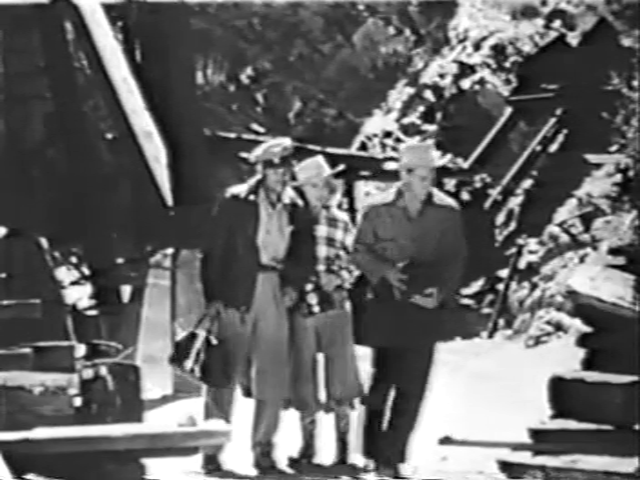
Bruce Gentry (1949)
Film review #530
Directors: Spencer Gordon Bennet, Thomas Carr
SYNOPSIS: Bruce Gentry, a charter pilot, has gone to see his friend is Dr. Benson, but the scientist is kidnapped by a mysterious gang led by a man known only as “The Recorder,” who wants Dr. Benson to work on their “flying disc” machines to unleash an attack on the country. Bruce teams up with Paul Radcliffe, an industrialist, alongside ranchers Juanita and Frank, in order to rescue Dr. Benson and put The Recorder’s gang out of action…
THOUGHTS/ANALYSIS: Bruce Gentry is a 1949 film serial based on the comic strip centred around the character of the same name. The film opens up with Bruce Gentry, a charter pilot, who gets into a fistfight with a gang of henchman less than a minute into the runtime. When Gentry’s friend Dr. Benson is kidnapped by a criminal gang to work on their inventions. Bruce teams up with Paul Radcliffe, an industrialist, and ranchers Juanita and Frank, whose land contains a mine where materials where Plutonite can be found, which the gang need to complete their machines. Together, they all try to rescue Dr. Benson and stop the criminal gang, led by the mysterious “Recorder.” The fifteen part serial has all the components that are very typical of the format, with each chapter revolving around the back-and-forth between the good guys and bad guys as they scheme and counter-scheme one another. It’s formulaic, but no less so than any of the other serials of the time. The use of airplanes as one of the focal points of the serial, and the main character being a pilot was again a popular choice of serials, as they were firmly in the public’s imagination after the second world war, and were seen as heroes. Unfortunately, there’s not much plane action in this; merely travelling from one destination to another, and usually not making it, as Bruce typically has to jump out of the plane at the last second to avoid being killed in typical cliffhanger fashion. There’s no dog fights or combat in the skies, which is something other serials do, so it is going to pale in comparison to others, and it feels like more could have been done instead of the forgettable schemes we get. The plot barely moves forward at any point, and is stuck at the initial stalemate between the heroes and villains until the final chapter.
The cast of characters is pretty bland: Bruce Gentry is a typical male lead (as with nearly all of these serials), but he doesn’t have anything special or interesting to set him apart: he just flies a plane occasionally. The rest of the characters are also unimportant: Paul Radcliffe, who hires Bruce to investigate the criminal gang, wants the secret of the flying disc’s that the gang uses for himself, but keeps that a secret. This could have led to an interesting side story, but it’s never really followed up. There’s Juanita, the one female character (apart from Paul’s secretary) who has some fight in her, but usually just falls into the role of being kidnapped every other chapter. Frank is completely ineffectual, and just serves as another pair of hands, and the henchmen are completely unremarkable. The Recorder, the mysterious villain who leads the criminal gang, is only heard through voice recordings (hence the name I guess), and while his identity is kept secret throughout the serial, his eventual reveal comes long past the point of being invested in this serial.
As mentioned, the serial does little to try anything new, and the lack of action that isn’t just fistfights makes everything very predictable and dull. One noteworthy element is that this serial is the first time a “flying saucer” was featured on screen, with the criminal gang’s “flying discs” being their main weapon. They are mostly seen as a traditionally animated object flying towards the screen, which does look a bit out of place, and could probably achieved without resorting to animation and creating something so distractingly different to the rest of the serial. This technique was done in other serials, most notable in the Superman serials, but this was typically for when Superman had to fly, which would have been difficult to film in such low budget, low-tech conditions. In Bruce Gentry, I’m sure they could have just used a model to the same effect. Directed by Spencer Gordon Bennet, who directed by so many similar serials, Bruce Gentry has all the pieces of a typical serial, but fails to offer anything in terms of an exciting plot, interesting characters, or unique sci-fi premises. I’d rank it below average, but definitely not the worst of the movie serials (only because there are some really bad ones).
-
#529 – Evil Bong 888: Infinity High (2022)










Evil Bong 888: Infinity High (2022)
Film review #529
Director: Charles Band
SYNOPSIS: Rabbit has opened up a new restaurant to try and go legit after his many weed-related adventures, with the evil bong, Ebee, working in the kitchen. However, many mishaps ensue, and tempt Rabbit to return to his old ways…
THOUGHTS/ANALYSIS: Evil Bong 888: Infinity High is a 2022 film and actually the ninth film in the Evil Bong series (if you’re counting Evil Bong vs. Gingerdead Man). The film opens up with series regular Rabbit preparing to open a new restaurant and attempting to go straight without smoking weed. Meanwhile the evil bong, Ebee, is helping out in the kitchen. If you’ve seen any of the other Evil Bong films, then you’ll know what to expect: a bunch of one-note characters come through the doors, and do their predictable humour, while the next characters come in and add to the scene. Everything that I have written about the previous Evil Bong films essentially just applies to this one: it is not a complex film, the plot is barely a plot, but the audience is people that are high and probably only aren’t going to follow any complexities, and just want to see some stupid, sexy or trippy stuff on screen. With a runtime of around an hour, at least the film does not overstay it’s welcome.
The film is, in some way, a return to basics (if you think the series ever evolved beyond “basics”), and takes out a lot of the characters and concepts that had driven the last few films, such as Lucy Furr, the Gingerdead Man, and Sexy Hell (yes, I did just write all of those things, and yes, they did happen). Although it’s unclear whether this is just because they couldn’t get any of the other actors to return; even though this hasn’t stopped them before from simply recasting a lot of roles. As such, we are left with Rabbit and Ebee, who became the only ones to appear in all the previous Evil Bong films. The “I tell you what” rednecks return doing their regular shtick, and even though they have been doing the same thing over numerous films, it’s strangely comforting to see them back doing the same thing, as it probably wouldn’t feel like an Evil Bong film without them at this point. The film also manages to bring back Larnell, one of the original characters, for the final few minutes, but he literally does nothing other than smoke a joint. The Gingerdead/Gingerweed man also make a brief cameo at the end, so there was at least some effort to acknowledge some of the other key characters of the series.
The film does try to be up to date with some it’s characters: you have a “Karen” who comes into the restaurant to complain, two teenagers who don’t know how to act in public post-Covid pandemic, and “Joe Exotic” (not actually him, in factm it doesn’t even look like him) It’s very little, and hardly biting social commentary, but it helps set the scene a little, and make the characters seem a bit more relatable (even though they are never anything more than clichés.) To balance this out as well, you also get the German chef named Sal Monella, whose personality is simply being German (you can probably imagine what that means). Again, it’s all simple stuff that doesn’t need to be anything more than what it is, but that doesn’t necessarily make it good.
Like most (all) of the Evil Bong films, the film has two sets: the restaurant, and the kitchen. Even then, quite a few of the scenes are obviously completely green-screened. It cuts back on trying to use CG and trippy special effects, and just sticks to having a laugh with the characters and tropes they have. Being as this is supposed to be the final Evil Bong film, it doesn’t really have a definitive ending or resolution, but at least it didn’t end on a cliff-hanger like Evil Bong 777 did (and which this film pretty much ignores). Overall, Evil Bong 888 is, as all of the films in this series are, crude, low budget, and without a plot. But as always, these films are meant to target an audience of people who are probably so high they are devoid of sense, so anything more complex than semi-nudity and weed jokes isn’t going to be truly appreciated. I think cutting a lot of the characters and lore it had built up helps the film in some regards by focusing on the characters that work, but it doesn’t offer anything new, or a definitive, satisfying ending to the series. I don’t think it’s the worst film in the series, as it attempts some relevant jokes, and returns some of the more memorable characters, but there’s still plenty of dull moments and flat jokes that would remain flat no matter how high you are. If you are familiar with Full Moon’s low budget films, you’ll recognise this as more of what they do, but if you’re expecting something entertaining that delivers something truly unique with its concept, you’ll be sorely disappointed: that ship sailed long ago.
-
#528 – The Three Fantastic Supermen (1967)





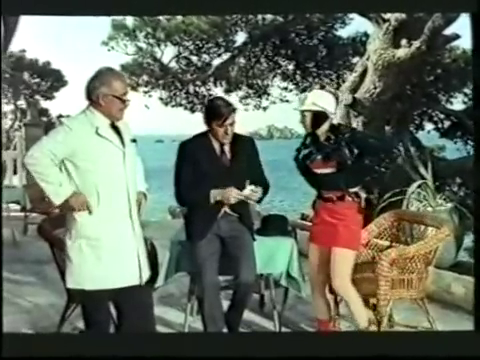




The Three Fantastic Supermen (1967)
Film review # 528
Director: Gianfranco Parolini
SYNOPSIS: FBI agent Brad hires two “supermen” who fight crime in their bullet-proof suits. The three of them join forces to become the “three fantastic supermen,” to investigate an evil plot concerning counterfeit money and bad guys turning people into precious jewels…
THOUGHTS/ANALYSIS: The Three Fantastic Supermen is a 1967 film. The film opens up with FBI agent Brad testing two superhero crimefighters, Tony and Nick, to see if they are up to joining forces. The two pass the test, and the three work together to investigate a counterfeit money ring and an evil scheme. The film is very much one of the many, many comedy spy films that parody the likes of James Bond-style films, and were especially in abundance in Italy at the time. It also has this superhero element too, with the characters dressing in skin-tight spandex and capes that serve as “bullet-proof suits.” The plot of the film is pretty standard for a spy film parody, but it at least has direction and some twists, with the somewhat uneasy alliance between the FBI and the two vigilante heroes leading to some conflict between them. The main aspect of the film is the comedy though, so everything is done in a silly, slapstick way. Any sense of peril is faced by Tony’s cheeky smile, and Nick’s expressive facial expressions and motion (accentuated by the fact he is mute). Things get even more silly when a machine that turns people into precious jewels gets introduced, as well as the machine eventually being able to clone people, but it also gets a bit sinister, when a class of schoolkids are kidnapped and nearly killed (the cloning machine works properly on children, but not adults apparently). Regardless, it’s a standard bit of comedy and parody, with plenty of scantily-clad women and chauvinism to appeal to its young male target audience.
The three main characters, Tony, Brad and Nick are different enough to make them distinguishable and interesting: as mentioned, Brad is the straight-laced FBI agent who has an uneasy alliance with the other two, although this typically ends with them playing practical jokes on him as he tries to get their secrets from them. Tony is the suave cheeky chap who laughs off any threats, and Nick as the expressive mute gives the scenes a different kind of energy. The supporting cast is a fairly typical bunch, with the evil criminal mastermind, the scientist, and his attractive daughter who serves as the love interest, so it’s unremarkable, but it has the staples of the films it is attempting to parody. The three “fantastic supermen” are also played by trained acrobats, so they can pull off some good stunts and performances, which again give the scenes a unique energy and appeal. There’s also plenty of props and variety in the scenes to make it feel busy and engaging, so while it’s a bit low budget and all over the place, it is still entertaining, although the music consisting of one of about three pieces of music played every other minute does get annoying quite fast. Overall though, The Three Fantastic Supermen is a very typical spy comedy of the time, with the added superhero element adding in a bit of a twist, and the acrobatics giving the stunts a bit more energy. It’s nothing too special or memorable, but it was apparently successful enough to warrant a number of sequels, which we will have to look at at some point…
-
#527 – A Nymphoid Barbarian in Dinosaur Hell (1990)






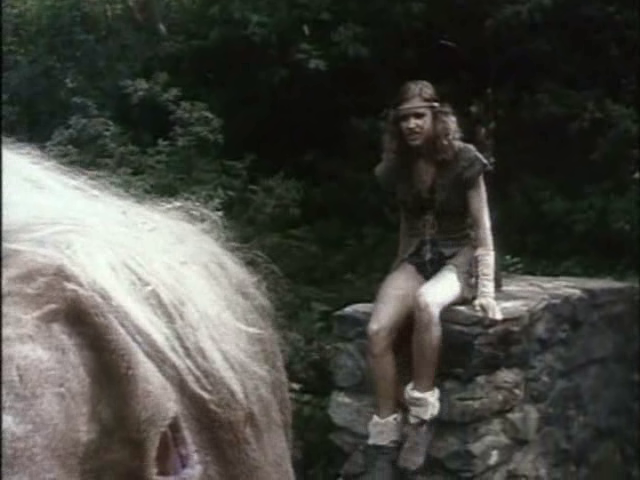

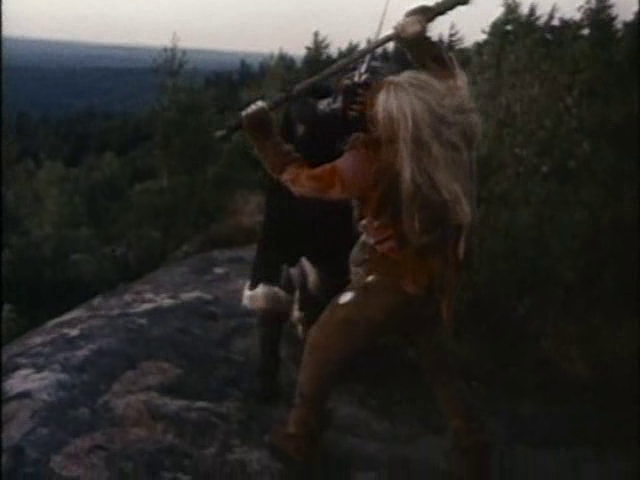

A Nymphoid Barbarian in Dinosaur Hell (1990)
Film review #527
Director: Brett Piper
SYNOPSIS: In a post-apocalyptic Earth, a young woman has to survive in a world infested with dinosaurs, mutants, and barbarians.
THOUGHTS/ANALYSIS: A Nymphoid Barbarian in Dinosaur Hell is a 1990 post-apocalyptic sci-fi film. The film opens up the same way as nearly every post-apocalyptic film does: with a montage of the world being essentially destroyed by nuclear war. What is left is a world filled with dinosaurs, mutants, lizard people…just a mish-mash of any and all typical things you’d find in other films. There’s not much rhyme or reason to the setting. The plot is…basically non-existent: there’s hardly any dialogue, any motivation, or any direction. With post-apocalyptic films you can definitely make the lack of dialogue or story work: in a world where society has collapsed, sometimes the only goal is to survive, and films like Mad Max 2, which also uses minimal dialogue and focuses on action, works extremely well. Here, that is not the case, as the action is sub-par and without any spectacle. The film just consists of some wandering about and scrappy fights, with a few stop-motion monsters as well. There’s no sense of character, world or development to maintain interest, and it certainly doesn’t live up to the hyped up title, which is probably the only reason anyone would be drawn to this film.
But we shouldn’t perhaps be so disparaging about the film because it was made by the company Troma; who are known for making low-budget sci-fi horror films that rely on comedy and satire to make fun of the genre. Even by Troma’s standards though, this is bad. This film just doesn’t have any amount of self-awareness or satire that would make you think it is poking fun at the genre: it’s just dull, and the lack of any substance means you really have no idea what to take from it. The title promises much, but delivers very little: there’s not really any dinosaurs, the barbarian isn’t a nymphoid (in fact nymphoid isn’t a word), and you’re not missing out on anything if you skip this film.
-
#526 – Sonic the Hedgehog (2022)


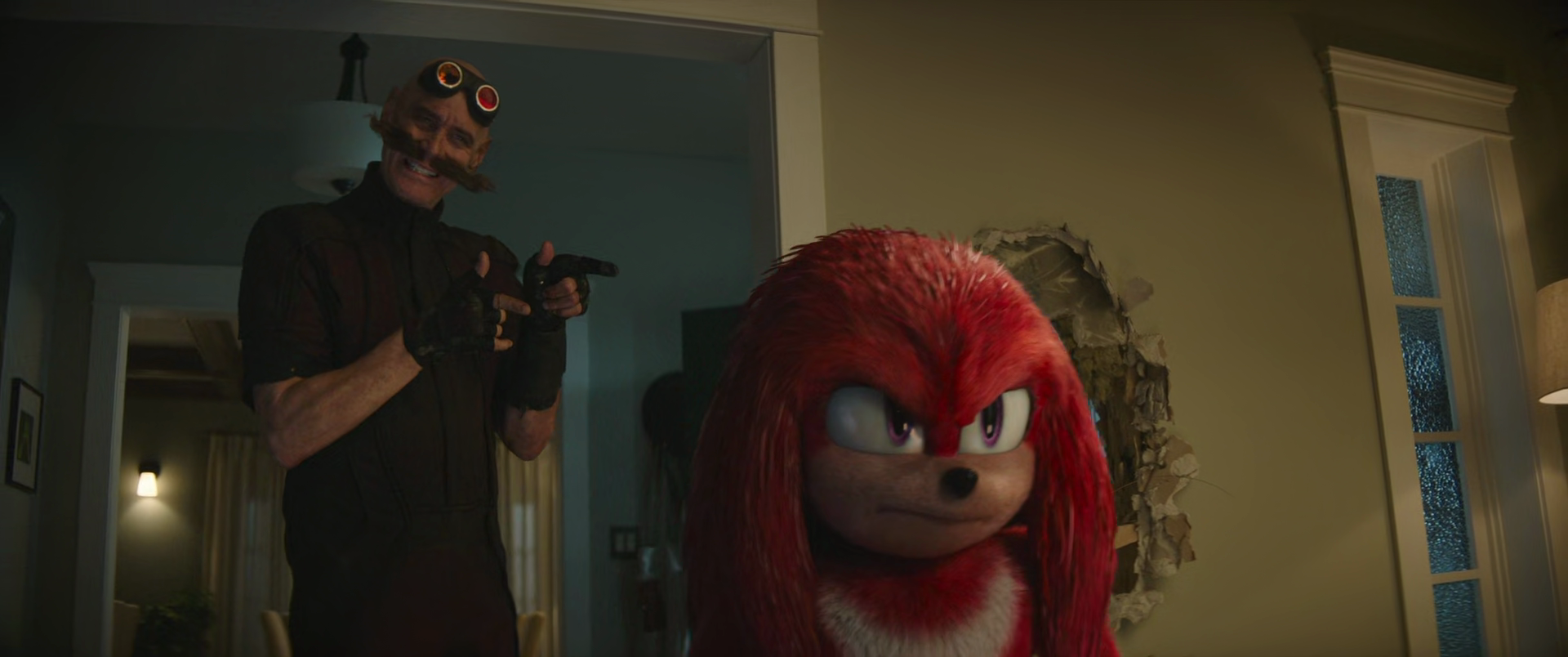





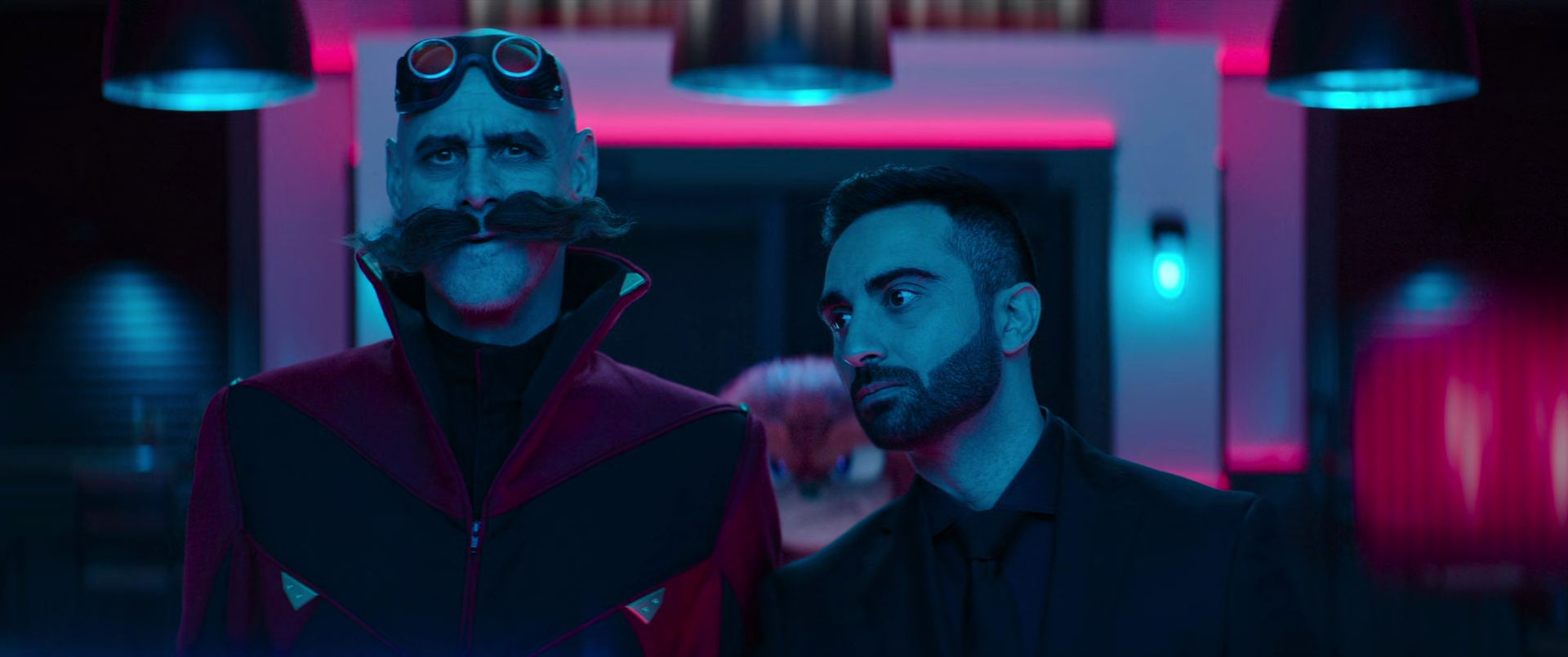


Sonic the Hedgehog 2 (2022)
Film review #526
Director: Jeff Fowler
SYNOPSIS: While Sonic the hedgehog struggles to be a hero on Earth, his nemesis Dr. Robotnik is making plans to return to Earth, helped by the mighty Knuckles the Echidna. Meanwhile, Sonic manages to get some help from Tails, a new friend who comes to warn Sonic of Robotnik’s return, and his quest to find the master emerald…
THOUGHTS/ANALYSIS: Sonic the Hedgehog 2 is a 2022 film, and the sequel to the 2020 film Sonic the Hedgehog. The film starts off with Sonic trying to use his powers for the best, and struggling to fit into the role of a hero. Meanwhile, Dr. Robotnik is trapped on a planet of mushrooms, looking for a way to get back to Earth and get his revenge. The story feels like one you would typically see in a sequel, with the characters being given new problems to overcome, and some attempt to develop their characters. It feels very similar to the first film, but that’s not necessarily a bad thing, as the first one was decent: nothing spectacular, but decent for its young target audience. However, I think the script could have done with another re-write or revision: the whole thing doesn’t really stick together very well, and the scenes feel disjointed, alongside the main plotline of the film getting lost through the mish-mash of scenes. The film does at least focuses on Sonic and his friends for most of it, and the story elements of the human characters is diminished, but this is what you want really. This also has the effect of having their story more self-contained and easier to follow than what Sonic and his friends are doing. At a runtime of two hours, the film could probably have been cut down easily by about fifteen to twenty minutes, and that is probably something that would have been achieved with another script re-write.
All of the characters from the original return, and have their own things to do. The introduction of Knuckles is a stand-out point, with Idris Elba voice the character and really making it his own. Probably the funniest moments in the film come from Knuckles and his over-serious nature. Jim Carrey brings the energy as Dr. Robotnik again, and Agent Stone is a good lackey for him. The introduction of Tails is a bit wobbly, and always feels like any explanation or development of his character is off-hand and implied. I think there should definitely have been more of a balance between the introduction of both Tails and Knuckles to properly flesh out both characters.
Overall, Sonic the Hedgehog 2 is a sequel that continues the work of its sequel without too much fanfare: it carries on the bits which worked and improves on them to some degree, while focusing less on the human characters (but even their scenes feel a bit more focused, even if they’re mostly just for the sake of comedy). It’s still aimed at a younger target audience, but it can still get a few laughs, especially when it relies on good old-fashioned comedy rather than making awkward references (although I’m sure the target audience will enjoy them still). There’s definitely some issues with the story not flowing and coming together, the long runtime, and the story of some characters not being integrated fully into the story, and as mentioned, I think most of these issues could have been addressed with another script re-write or revision. Nevertheless, its still an entertaining film for its target audience, and fits nicely alongside the first film.
-
#525 – The Flight that Disappeared (1961)

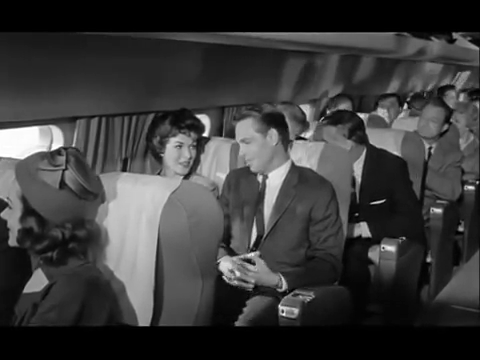








The Flight that Disappeared (1961)
Film review #525
Director: Reginald LeBorg
SYNOPSIS: A commercial flight to Washington D.C. starts to gain altitude uncontrollably, eventually losing contact with the ground. Among the passengers are three top scientists, who have been summoned to the Pentagon for a meeting, and eventually the only ones who are left conscious as the aircraft continues to ascend…
THOUGHTS/ANALYSIS: The Flight that Disappeared is a 1961 film. The plot concerns a commercial flight to Washington D.C. that continues to gain altitude as the pilots lose control and radio contact with the surface ceases. The build-up of the mystery is fairly interesting, and it certainly makes you wonder where it is all going: there’s no evidence of any sci-fi or extraordinary influences, so it does keep you guessing as to what is actually happening. The cast is introduced with enough detail to set the scene well, although what turn out to be the three main characters, the scientists, Dr. Carl Morris, Tom Endicott, and Marcia Paxton, aren’t very apparent until a good portion of the film, which again helps with the mystery, but also leaves the film a bit directionless. The three main characters are unknown to each other when they board, but learn that they are all there for the same reason: to attend a secret meeting at the Pentagon for the development of a new “beta bomb,” a weapon more powerful than the atom bomb. There’s a passenger on the plane who tries to talk to them individually, saying that they must use their weapon on enemy countries with a pre-emptive strike, but the scientists are insistent that it is a weapon to only be used in self-defense or retaliation. The plot, as you can probably tell, is rooted firmly in cold war era politics, although it doesn’t contribute to the mystery too much. While the film does a lot to set up the scene and the people aboard the flight, it is let down by the fact that there’s barely any personality between them, and nothing really happens in the first part of the film.
It turns out the three scientists have been summoned to a trial of sorts by the people of the future who have yet to be born, and probably will never be, if their weapon is allowed to be built and used. The film quickly jumps here from nothing happening, to a bit too much happening: we’re not given any set up for this whole trial and having to face people from the future, and it is all a bit sudden. I feel like the message gets increasingly muddled as well in this part, as the future not born people (whatever we are calling them…) accuse the scientists of being guilty because they conceived the idea of these weapons, and despite opposing their use in anything other than self defense. Is the film’s message essentially seems to be that having a bad idea makes you guilty, whereas the person or politician that uses it is simply a bureaucrat following orders and ticking boxes. There’s something about the whole message here that seems a bit off. I appreciate that the film does look at the moral quandaries it raises with a good amount of depth, but the overall conclusion just seems a bit weird; holding oneself morally accountable to people that have not or may never be born just seems a bit misguided to me.
Despite the film being an independent production, it is made quite well: the airplane where most of the film is set is a set, but it is pretty convincing and accurate. Overall, The Flight that Disappeared has an interesting mystery, but is bogged down by dull characters, and slow pacing at the beginning. The resolution and messaging is also muddled, but it does at least explore it’s subject in some depth. It probably would have been at home as an episode of The Twilight Zone, and certainly fits that tradition of 60′s science-fiction.

